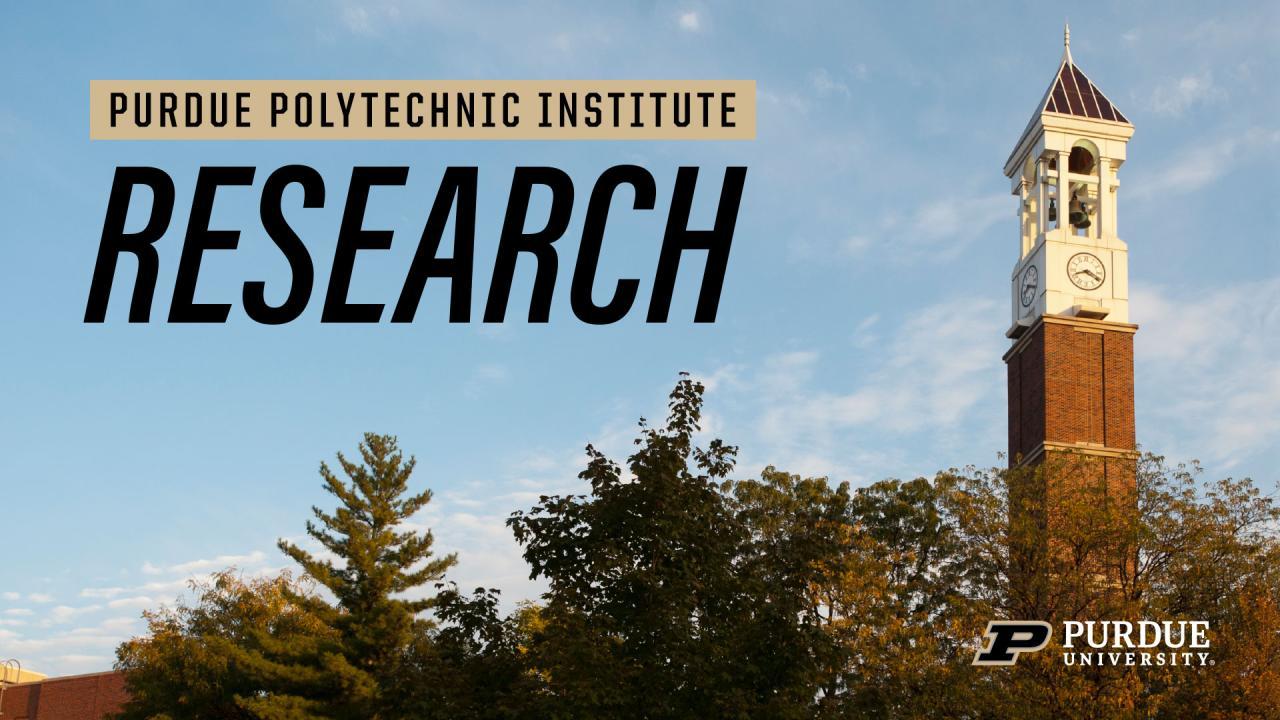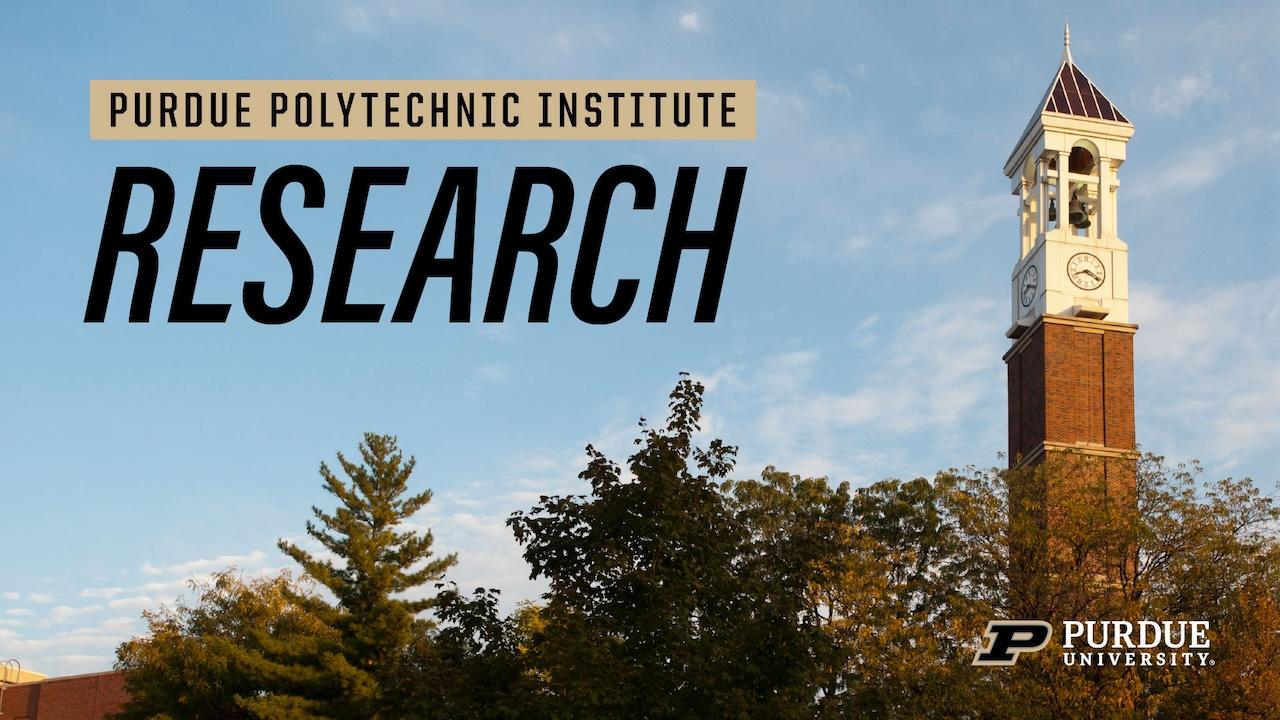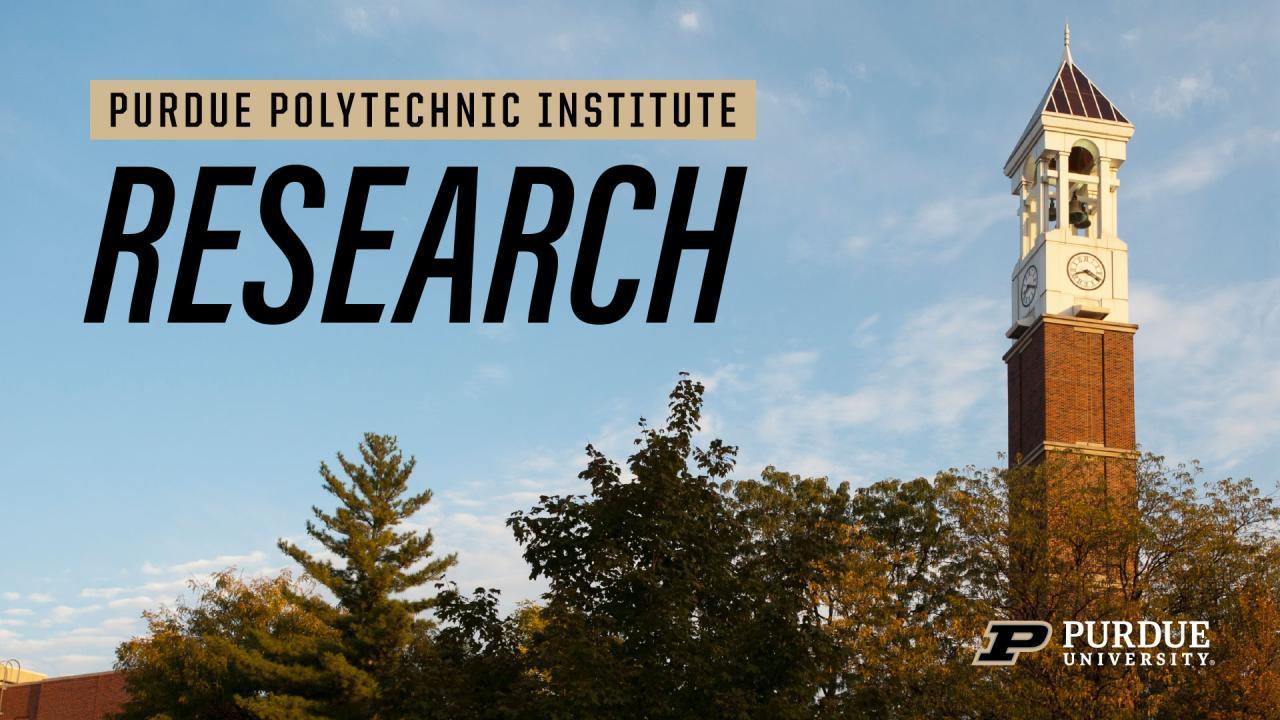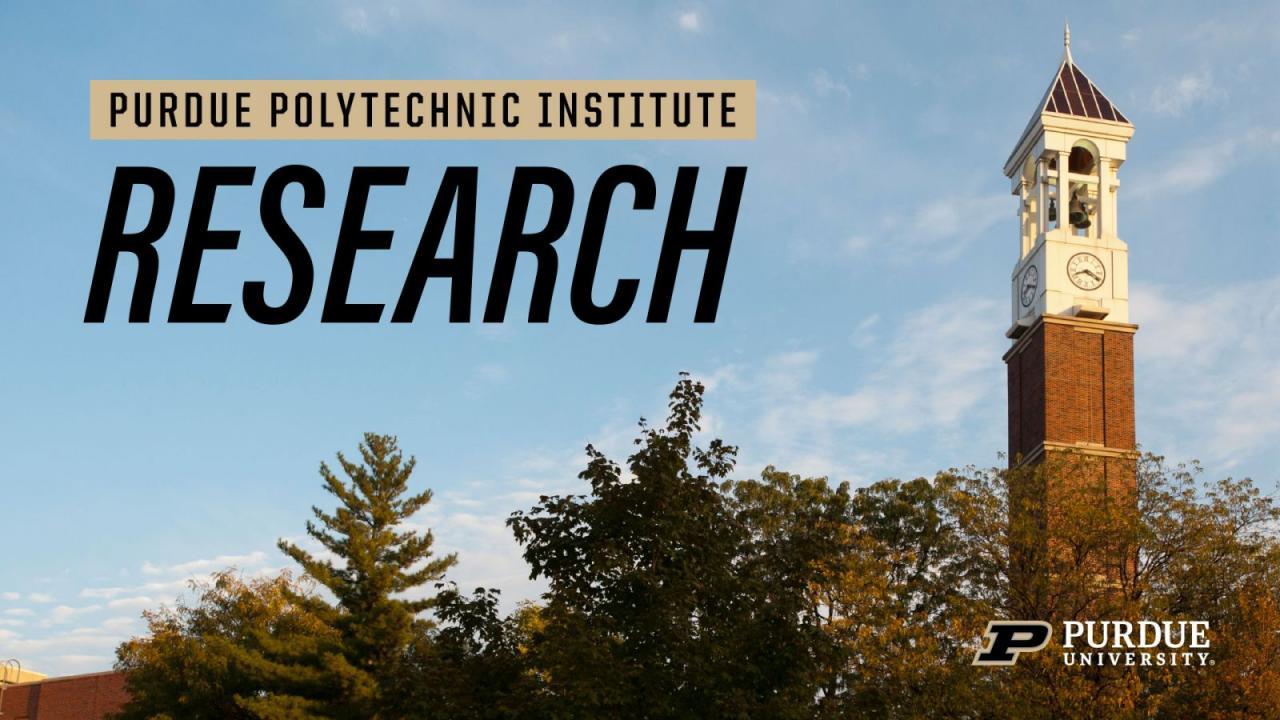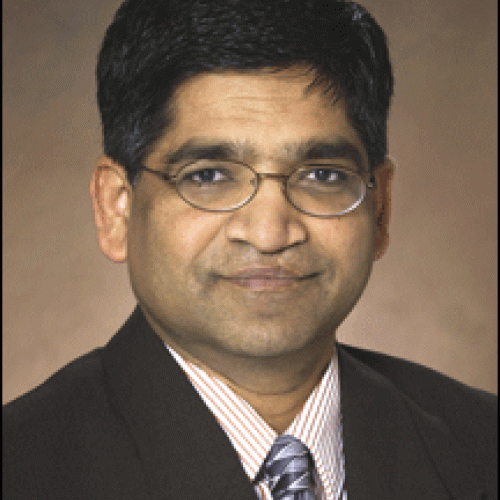
Dr. Suranjan Panigrahi is an internationally recognized scholar of engineering & advanced technologies, a real-world solution architect, an innovator, an educator, and a higher-education leader. At present, he is a tenured professor in the Department of Electrical and Computer Engineering Technology, He has comprehensive experience in research, teaching (learning), administration, and outreach.
He has cross-disciplinary training and research expertise in engineering design, artificial intelligent technologies, biological systems, sensors, automation & control, electronics, information technologies and management science (via MBA). At present, he directs a multi-disciplinary research laboratory "Integrated Sensing and Smart Solutions Laboratory" at Purdue University. His research focuses on developing/adapting sensors/sensing, information, and intelligent technologies and their applications for biological applications (including food & agricultural, environmental, as well as health care domains). His group adopts a solution oriented- system-based approach in his research. For example, his group creates/have created smart sensors/ sensing systems, point-of-use field scale devices, and intelligent models for automation, quality control, defect, and contamination detection, as well as safety for different biological applications. He is also skilled in strategic analysis of an application domain (a given process or operation) and adapt or develop appropriate technological solutions while satisfying other critical factors (i.e., economic, social, and other applicable policies/constraints).
He is the lead inventor of three approved U.S. patents (related to field scale quality sensors) that are milestone patents in the field of “precision farming and big data in agriculture.” He is the author/co-author of more than 170 technical papers, publications, book chapters including patents and software. His papers and scholarly contributions have 4392 citations with the h-index of 31 and the i10-index of 59.
Before joining Purdue, he was a full professor (tenured) in both the Colleges of Engineering and Agriculture at North Dakota State University (NDSU), Fargo, USA. He was the founder-director of a multidisciplinary research center “Bio-Imaging and Sensing Center” at NDSU and served as its director for 9 years. During his tenure at NDSU and Purdue. Dr. Panigrahi has launched multiple interdisciplinary projects that created solutions for different critical societal challenges related to agricultural production, precision agriculture, food safety & quality, environmental health, automation, process control, health informatics, and human health & wellness. He has worked with faculty from a variety of departments and disciplines (agronomy, plant breeding, plant pathology, horticulture, entomology, agricultural economics, food science, microbiology, etc). He has also partnered with a variety of stakeholders (including individual growers, processors, commodity grower’s associations, small, medium, and large-scale industrial counter parts, and other research organizations). He has also worked on multiple international projects related to agricultural, food, environmental health applications in European countries, Peru, Nepal, and India.
Dr. Panigrahi has exercised his visionary skills in research & development activities while pioneering technological developments and translations that were 18-20 years ahead of their time. In this process, he has collaborated with researchers, scientists, decision-makers, students, staff and other stakeholders from universities, industries, and private organizations. This has resulted in training post-doctoral associates, technical staff members, graduate (M.S. & Ph.D.) as well as undergraduate students. A total of 47 M.S. and Ph.D. students have successfully graduated under the supervision of Dr. Panigrahi. Another 13 post-doctoral associates have completed their training with Dr. Panigrahi. His ex-post-doctoral associates and ex-Ph.D. students are now working as tenured (as well as tenure track) faculty members in U.S. universities, as technical leaders in industries, and as entrepreneurs. He has also hired (with pay) many undergraduate part-time researchers in his lab to provide the students with hands-on experience while they work on relevant research projects.
Current Research Focus and Thrusts
Our group focuses on three thrusts in research: a) fundamental, b) use-inspired, and c) applied. In the fundamental research domain, we use novel tools to understand the inherent intelligence embedded in the natural and biological systems and we call it “bio-inspired discovery.” Based on our discovery, we engineer novel sensors and sensing systems to solve real-world problems.
Under the use-inspired and applied research, our team focuses on creating smart sensors, sensors-integrated intelligent systems, devices, control system, process analytical technologies, decision support systems/models, and processes for – real world applications in biological systems (including food, agricultural, health care, life science, environment and bio-manufacturing).
Domains of Our Research Thrusts:
- Customized sensor and sensing system, IOT and intelligent system for automation, & quality control, in agricultural, food and biological (life science) sectors including bio-manufacturing and general manufacturing sectors with emphasis on industry 4.0 & 5.0.
- Based on his expertise on photonic sensing (imaging and spectroscopy including NIR, FTIR, Raman, VIS), signal processing, and pattern recognition (i.e. statistical methods, multivariate statistics, chemometrics, and machine learning), his group is also focusing on developing and adapting Process Analytical Technologies (PAT) for real-time monitoring and control of pharmaceutical and related bio-manufacturing processes.
- Design and development of intelligent systems, devices, decision support systems for agricultural production and processing applications including diseases detection in plant, nutrient management, yield prediction of crops and overall sustainability.
- Intelligent portable sensors, devices, and systems for defect & contamination detection in environmental systems including water.
- Design of devices and systems for human and animal health care sector including point-of-care screening/diagnostic system, and assistive devices for enhancing quality of life of people with challenging diseases.
- Intelligent predictive health informatics for risk prediction of critical diseases including diabetes, NAFLD (Non-Alcohol fatty liver disease)/ MASLD (Metabolic Dysfunction-Associated Steatotic Liver Disease) and Out of Hospital Sudden Cardiac Arrest (SCA).
Our Selected Research Accomplishments:
- Dr. Panigrahi and his groups are one of the early pioneers for developing and applying multiple forms of Artificial intelligent and other sensor technologies for a variety of agricultural, food and biological applications. One such application included disease forecasting in wheat using including neural networks. These products have been used for real-world applications that created new knowledge and behaviors among the stakeholders in agricultural and food sectors.
- As the lead inventor, his team was the leading group in creating three milestone inventions (and patents) related to on-the-go determination of quality constituents of crops in the field during harvesting (in late 1990s). These technologies were 18 – 20 years ahead of its time to lay the foundation of platform of advanced technologies for the basis for precision agriculture.
- Dr. Panigrahi and his students created a portable and non-destructive (one of the pioneers – in early 2000) sensor system to assess plant foliage health, its chlorophyll content, and nitrogen status in the field condition.
- Dr. Panigrahi conceived the idea and led the development of an optical imaging system for determination of chemical spray coverage directly on the plant leaves. This was a first technological system for such application (in late 1990s). This system was developed and evaluated in-close collaborations with agricultural extension professionals for a few crops (wheat, and sugar beet).
- Led the development of internet-based E-commerce system for trading of agricultural product across the Atlantic Ocean (between USA and European countries). It consisted of an objective quality evaluation system based on computer vision and virtual reality and this was subsequently integrated with internet. It was a pioneering system at that time (in 1995-96 era - at the time when Amazon was just taking off with the similar concept of e-commerce using internet).
- Adopting a systems-based approach, he and his group created a framework “SWADIN” (Sustainable Solution With Appropriate Technological Development and Innovation) for solving real-world societal issues while operating in a solution-domain, appropriate for a given location or region. Within this SWADIN framework, one of his group’s research thrust focuses on creating technological innovations for water-linked health and wellness that affect people (including elderly populations, mothers, and children) in different countries (including India). In 2013, a bilateral workshop was conducted in Kharagpur, India in collaboration with IIT Kharagpur. Participants from UNICEF, NGO, Government organization also participated (https://docs.lib.purdue.edu/swadin/2013/).
Our Research Approach:
We develop and adapt a system-based solution-oriented approach while integrating human-centered engineering design method. Most of our work focus on creating or developing systems for real-world applications. We use a multiple of sensing and analysis techniques including artificial intelligence (machine learning), automation & control, computer vision and non-visible imaging, information technology, photonic and plasmonic sensing, intelligent modeling, chemical and bio-mimetic sensing, intelligent sensing-based on smart micro- or nano-structured materials.
We also work on bio-mimicking integrated intelligent sensors capable of smell, taste, vision, and touch functionalities in an independent or combined manner. Under the taste functionality, we develop sensors for liquid materials. In nature, biological systems combine smell and taste functionalities to sense and operate in challenging environments. Similarly, we have the capabilities to combine different sensing functionalities to deal with complex situations. We also adopt the “sense & actuate” paradigm to perform desired functions in real-world conditions based on the sensed parameters.
Based on his technical expertise, acquired experience, and successes in creating novel devices, and intelligent models (system) for biological systems (food and agricultural domain), he expanded the scope of his research to solve problems in similar biological systems (human health and wellness). He utilized his transferable research skills to focus on intelligent health informatics, assistive devices, and point-of-care screening as well as decision support systems.
Leadership Philosophy
Dr. Panigrahi follows servant leadership framework. His leadership and management philosophies are found on honesty, humility, ethics, and integrity. He values and practice transparency, accountability, efficiency, and effective communication. He adopts an evidence-based management approach coupled with situation-specific adaptive leadership techniques and shared governance principles. He practices emotional intelligence and the social relational approach to leadership. He believes in engaging the stakeholders while building trust and confidence among them in achieving a given goal. He has proven his ability to be a visionary leader. He can envision the future trends, share those with the stakeholders, and develop pathways to create new opportunities and positive impacts. He believes in creating an eco-system of growth-mindset, collegiality, trust, and collaboration to achieve excellence in fulfilling the mission of the project/assignment. Finally, He is a life-long learner with cognitive flexibility.
Leadership Experience:
Dr. Panigrahi possesses a suite of leadership experience that helps him everyday in his job . As communication a key leadership skill, he trained himself to be certified as an “Advanced Toastmaster – Bronze” and a “Competent Leader” from Toastmasters International, (a well-recognized global organization for promotion of leadership, public speaking, and communication). He started exercising his leadership skills while he was a graduate student at Iowa State University. To promote collaboration and professional collegiality among the graduate students from multiple disciplines housed in an interdisciplinary center, he founded a student club and served as its president. He also served as the “Director of Human Relations” at Iowa State’s Government of Student Body. When he was as assistant professor at Nort Dakota State University, realizing the need, he founded an interdisciplinary research center and served as its director.
He also completed a flagship leadership program for Land-grant university system, ESCOP/ECOP, (now it is called LEAD 21). The potential leaders of the Land Grant University system attend this program. I served as an elected senator in the University senate at NDSU for three years. I also served as the chair of the “Promotion and Tenure” committee of the College of Engineering at North Dakota State University (NDSU). As the graduate coordinator (or chair of the graduate committee) of my associated departments at both the universities – NDSU and Purdue, I have significantly contributed to the growth of the respective programs. I have served as a chair or a co-chair in many academic committees at the university, department, and/or college level- both at NDSU and Purdue. I have also served as office-bearers (President, Vice-president, and Secretary) for multiple national level professional technical committees.
Teaching and Mentoring
Dr. Panigrahi has extensive experience in developing, modifying, and teaching different undergraduate and graduate courses. He has taught courses related to machine design, power units, electrical energy applications, basic electronics, innovation, computer vision, embedded systems. At Purdue, he has created a new undergraduate course on Applied Computer Vision for Sensing and Automation. He also developed and taught another undergraduate course on "Advanced Embedded Systems" where emphasis is placed on design and development of 32-bit embedded systems. He has also developed and taught graduate courses. He also developed graduate courses related to computer imaging, and biomedical innovations.
He has mentored more than 47 graduate students (MS and Ph.D.) and 13 post-doctoral associates (visiting scholars). His past students are employed as either tenure track faculty members in several U.S. universities or are in key technical/ management positions in private companies.
The followings briefly describe several courses that he has already developed and taught over the years. They are:
a) Applied Computer Vision for Sensing and Automation: A graduate course that focuses on how to design and develop a computer imaging system for a given application. It also focuses on the fundamentals and applications of different image processing, image analysis, and pattern recognition methods (including deep learning) for different imaging applications. I conceived the idea and developed this new course.
b) Biomedical Device Design/Innovation: A graduate course that deals with the overall process of innovating medical technologies (ranging from needs finding, needs screening, concept selection, implementation related strategies including regulations, quality management, reimbursement, market, sales etc.). This course largely covers the materials from the book “Biodesign: The Process of Innovating Medical Technologies. Ed: Yock et al., 2015”. Additional concepts on electro-mechanical, optical, and embedded systems are covered along with relevant case studies. I conceived the idea and developed this new course.
c) Linking Research and Development to Innovation – Closing the Gap with Societal Issues: This graduate course focuses on the overall processes, models and strategies for invention, innovation, and entrepreneurial activities to address relevant societal issues. I conceived the idea and developed the course. This course was taught once. However, it was well received by the students.
e) Incubating Technopreneurs for Social Challenges- ItSOL: This was designed as a team- and project-based independent study for multidisciplinary undergraduate students. The goal was to identify pressing societal issues and develop prototypes incorporating innovative and creative solutions. I conceived the idea and offered this course for 2 semesters – as a part of a grant.
f) Advanced Embedded Systems: This undergraduate course covers: i) design principles for developing a rapid prototype of an embedded system (both hardware and software) using the popular ARM architecture, ii) architecture as well as logic for interfacing and programming different input and output (I/O) peripherals and communication protocols, iii) how to use agile project management with SCRUM framework for rapid prototyping a given embedded system. This course has weekly hands-on laboratory exercises to supplement the concepts and theories learned in lecture sections. Moreover, this course has class-project to develop and evaluate an embedded system for a given real-world application. I fully redesigned the course with the latest technological platform.
Professional Service
He has provided his professional service and leadership in a variety of ways at his home universities and in different professional organizations including in the ASABE. He has served as reviewers and associate editors in different professional journals and for other funding agencies like USDA, and NSF. He has served in leadership roles in several national level technical committees. He has contributed to many professional organizations including IEEE, ASEE, ASABE, and AAAS. He is a member of two honor societies - Gamma Sigma Delta and Alpha Epsilon honor society. He was an invited examiner for Ph.D. students from Indian Institute of Technology, Kharagpur and University of Manitoba, Canada.
